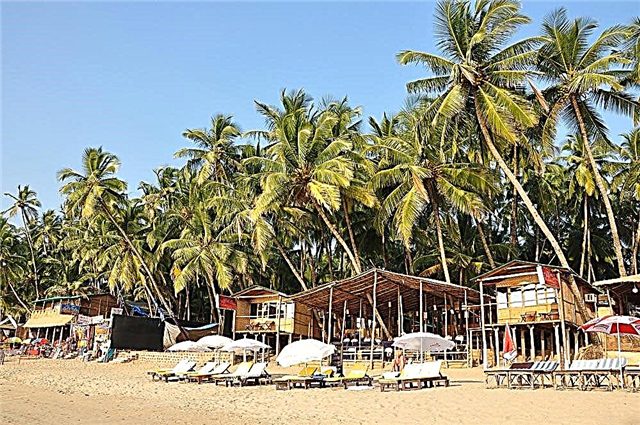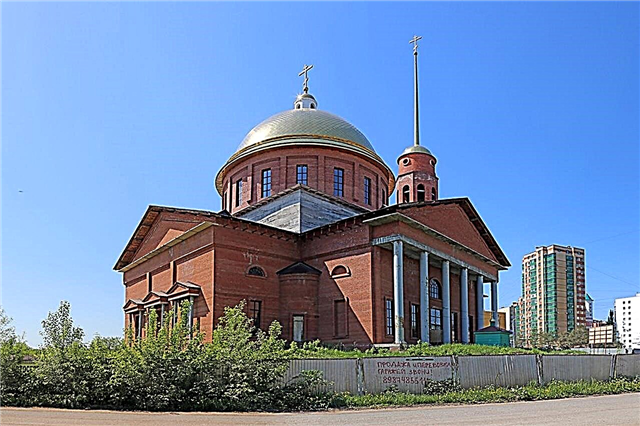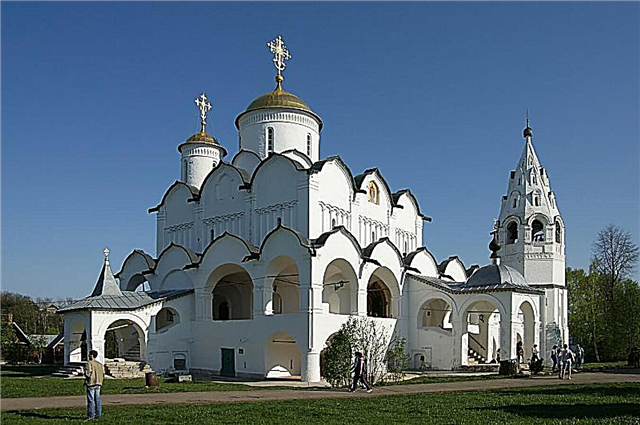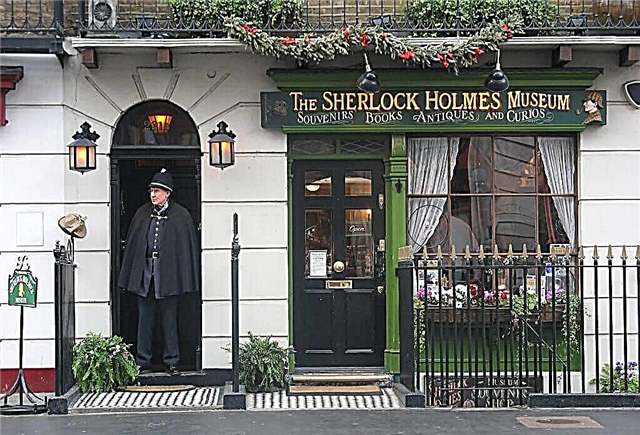London has something to show its guests. Their topics are different: from the glorification of British weapons to the collection of antiquities, museums of natural sciences and technological progress. Libraries amaze with a collection of rare books, and art galleries - with an abundance of paintings and sculptures. Britain's colonial past also played a role, with rarities from all over the world being collected in the exhibits. And the old part of the city itself is a gigantic museum of architecture.
The most interesting museums in London
British museum
The museum began in 1753 with three private collections. After 250 years, it is the second most visited museum after the Louvre. It is positioned as historical and archaeological, therefore the main part of the collections is antiquity. The most famous exhibits are the Egyptian, second only to the Cairo Museum, and the Middle East. It houses the Rosetta Stone, a collection of mummies of the pharaohs and their treasures, artifacts of the first civilizations of the planet taken from the Mesopotamian excavations.
Address: London, Great Russell Street, WC1B 3DG
Website: britishmuseum.org

Victoria and Albert Museum
Founded in 1852. The first largest collection of arts and crafts, included in the twenty most visited art museums. Initially, the collections were replenished exclusively with samples of modern art, but later unique medieval items were also acquired. The exhibitions are divided by theme: there are halls for the first photography, theatrical paraphernalia, an art gallery, collections of fabrics, ceramics.
Address: London, Cromwell Road, SW7 2RL
Website: vam.ac.uk

London National Gallery
The year of foundation - 1824, opening - 1839. The third most visited picture gallery in the world. 2000 works of Western European artists from the 13th century to the present are exhibited in chronological order in dozens of rooms. Among the canvases there are works of eminent masters: Titian, Rubens, Raphael, Van Dyck, Da Vinci. Collections are replenished regularly, through purchases of world masterpieces and private donations.
Address: London, Trafalgar Square, WC2N 5DN
Website: nationalgallery.org.uk

Wallace collection
The basis of the museum is a private collection, collected from 1760 to 1880 by the aristocratic Wallace family. In 25 galleries, there are 5,500 items of various subjects: from medieval weapons with ammunition to collections of porcelain and jewelry. A separate exposition is occupied by canvases of "old masters" -artists, and all the furniture in the building is antiques, moreover, belonging to historical figures.
Address: London, Hertford House, Manchester Square, W1U 3BN
Website: wallacecollection.org

Natural History Museum
The year of opening - 1881. The museum is a record holder in the number of exhibits - almost 140 million samples. There are four expositions: botanical, zoological, mineralogical and paleontological, divided into thematic halls. The famous and recognizable 26-meter full skeleton of a Diplodocus and a 30-meter blue whale are kept here. The pride of the museum is a collection of 27 million insects.
Address: London, Cromwell Road, SW7 5BD
Website: nhm.ac.uk

Churchill Situational Center
The year of opening - 1989. This is a bunker in London, from where the British government led the military campaigns of the Second World War and took refuge during the Nazi bombing of the capital. The entourage of the forties is completely preserved, the basis of the collection is Churchill's things, his notes and notes, samples of secret radio technology of encryption devices, authentic maps of military operations and declassified transcripts of meetings.
Address: London, King Charles Street, SW1A 2AQ
Website: iwm.org.uk

Gallery of the Courtauld Institute
At the Institute of Art, founded by the textile manufacturer Courtauld in 1932, there is a working gallery of paintings by “old masters” such as Bruegel and Van Dyck. On the examples of these works, the educational process of future artists takes place. The collection is also available to ordinary visitors, the most famous painting here is a self-portrait of Van Gogh, the one with the cut off ear.
Address: London, Strand Somerset House, WC2R 0RN
Website: courtauld.ac.uk

Royal Air Force Museum
The former Hendon airfield has become an aviation museum under the patronage of the UK Department of Defense. More than a hundred aircraft are available to visitors: from the first plywood "whatnot" to jet fighters. The special pride of the collection is the reconditioned bombers of the Second World War, some of them are in a single copy. The expositions are divided into five thematic halls that describe the history of the British military aviation.
Address: London, Grahame Park Way, NW9 5LL
Website: rafmuseum.org.uk

Sir John Soane Museum
The founder of the museum is an architect, therefore the main part of the exhibits is related to construction. These are ancient and modern drawings, paintings and prints depicting the construction of something. The peculiarity of the exposition is the piling up of various objects on top of each other without any chronological or thematic order. Plus an abundance of crooked mirrors that seriously distort the perception of visitors.
Address: London, 13 Lincoln's Inn Fields, WC2A 3BP
Website: soane.org

Imperial War Museum
Year of foundation - 1917. The museum is dedicated to all wars, starting with the First World War, in which British soldiers took part. The collections correspond to the name: weapons, uniforms, archival military documents, a collection of photographs. Part of the exposition is devoted to the military industry, labor exploits of workers in the rear. It has four branches: two in London, one each in Cambridge and Manchester.
Address: London, Lambeth Road, SE1 6HZ
Website: iwm.org.uk

Science Museum
The year of foundation - 1857. The collections of the museum are collected from the surplus funds of other similar institutions throughout the kingdom. There are more than 300 thousand exhibits, distributed by subject: for example, halls of clocks, printing presses, electricity, communications, physics, photography, aviation. There are a number of unique items like mechanical computers and the first British steam locomotive, examples of inventions from the USSR.
Address: London, Exhibition Road, South Kensington, SW7 2DD
Website: sciencemuseum.org.uk

Sherlock Holmes Museum
Dedicated to a fictional detective and located at a real address from the books. Although, at the time of writing, Baker Street was shorter, 221b did not exist. The interior of the museum apartment has been restored in detail according to book descriptions and is "crammed" with objects from the stories about Holmes: a violin, a hat, a shoe with tobacco, a Watson revolver, a doctor's cane from The Dog of the Baskervilles, and so on. Everything can be touched and photographed in the famous armchairs by the fireplace.
Address: London, Baker Street, 221 B
Website: sherlock-holmes.co.uk

Museum of London
Year of opening - 1976. Dedicated directly to the capital of Britain and describes its history from antiquity to the twentieth century. The expositions are mostly represented by household items of Londoners and things of historical figures. The main attraction is the carriage of the London Lord Mayor. The visit to the institution is free, as support is provided by the city authorities. It is scheduled to move to Smithfield in 2020.
Address: London, London Wall, 150
Website: museumoflondon.org.uk

National Portrait Gallery
Became the first museum in the world to display exclusively portraits. In addition to classical oil paintings, the collections include sculptural images, miniatures, photographs. There are more than 500 thousand exhibits, most of them are paintings by British artists depicting representatives of the nobility and the royal house. It is noteworthy that until 1969 the museum was prohibited from buying portraits of people still alive.
Address: London, St Martin's Place, WC2H 0HE
Website: npg.org.uk

Tate Gallery
Founded in 1897. Opened and expanded at the expense of the industrialist Henry Tate, the first paintings in the museum collection belonged to him. Initially, only works by British artists born after 1790 were exhibited, later the collections were replenished with paintings by their foreign colleagues. The exhibitions are being expanded mainly by canvases donated to the institution by the painters themselves.
Address: London, Millbank, SW1P 4RG
Website: tate.org.uk

Tate Modern
Museum of the Tate Gallery Group. Dedicated to contemporary art, the works on display appeared after 1900.Since 2012, the gallery has regularly held unusual exhibitions of contemporary visual objects, launching a project to support youth art. Among the famous exhibits there are paintings by Marc Chagall and Malevich. The total number of visitors is more than 300 million during its existence.
Address: London, Bankside, 53
Website: tate.org.uk

FC Arsenal Museum
Started as a museum tribune for Emirates' hometown Arsenal stadium. In 2006, the arena began to be rebuilt, the exposition was moved outside the stadium. The exhibits are represented by a variety of football paraphernalia and things of the players who glorified the club. The crown jewel of the collection is the 2004 Premier League Cup, which earned the team the nickname "The Invincible". The attendance of the institution is about 120 thousand annually.
Address: London, Avenell Road
Site: arsenal.com

National Maritime Museum
The museum was opened in 1937. The museum occupied the area of the former Royal Shelter of Naval Seamen, its expositions are devoted to navigation in general and the British fleet in particular. There are two million exhibits of near-sea subjects, from portraits of naval commanders to household items of sailors and weapons. The collection of marine scents is notable - a stand with samples of the aromas of the cargo of ship's holds.
Address: London, Romney Road, Greenwich, SE10 9NF
Website: rmg.co.uk

HMS Belfast
The cruiser-museum, a participant of the Second World War, as part of the British squadron, who sank the Hitlerite battleship Scharnhorst. In 1963, it was withdrawn from the navy and turned into a floating exhibition of household items and weapons of British sailors of the mid-twentieth century. The atmosphere of time is conveyed with the help of mannequins depicting sailors, officers and decorations. It is a branch of the Imperial War Museum.
Address: London, The Queen's Walk, SE1 2JH
Website: iwm.org.uk

Wimbledon Tennis Museum
The year of opening - 1977. It was originally a closed museum for members of the All England tennis and croquet club, until in 2006 it was opened to the public. The exhibition features sports relics from the inception of tennis. Among them are the dress of Maria Sharapova, the uniform of Anna Kournikova, the silver coffeepot Elizabeth Rhine, presented to her by Nicholas II for winning the Russian championship in 1914.
Address: London, Church Road, SW19 5AG
Site: wimbledon.com

Charles Dickens House Museum
Founded in 1923. The writer lived for some time in this cozy house on Doughty Street. Created by the efforts of a group of literary enthusiasts, admirers of Dickens's work. For a long time, it was visited only by scientists and students of literary faculties, until after the restoration in 2012 it became available to ordinary fans of the writer and tourists. It is a Victorian mansion with a fully restored atmosphere of the time.
Address: London, Doughty Street, 48
Website: dickensmuseum.com

Saatchi Gallery
A rather controversial art gallery specializing in outrageous contemporary art. Unusual objects are exhibited here, such as gutted animals preserved in formalin or an ice sculptural self-portrait made from the artist's own blood. The museum is at the same time a trading platform where such works are purchased. The entrance to the abode of conceptual art is free.
Address: London, Duke of York’s HQ, King’s Road, SW3 4RY
Site: saatchigallery.com

Museum-ship "Cutty Sark"
The fastest "tea" clipper of the 19th century, delivering precious cargo from China, turned into a museum in 1954. Located in Greenwich Dry Dock, near the National Maritime Museum. The entourage of the era of "tea races" is preserved on board, all the nooks and crannies of the ship are available to visitors. It was rebuilt after a fire in 2007, due to restoration the museum was closed for five years. A whiskey and a prestigious sailing regatta are named after the Clipper.
Address: London, King William Walk, Greenwich, SE10 9HT
Website: rmg.co.uk

Museum of brands, packaging and advertising
The history of consumer culture, illustrated by 12 thousand exhibits. The museum began with the usual wrapping of a chocolate bar, now it displays samples of products from famous brands, both well-known and disappeared. There are exclusive exhibits, such as a soldier's toilet paper with a portrait of Adolf Hitler. On the territory there is a souvenir shop, assortment - old toys, cans, packaging, postcards.
Address: London, Lancaster Road, Notting Hill, 111 - 117
Website: museumofbrands.com

Wellcome collection
An unusual museum dedicated to medicine and its connection with art. In addition to the permanent exhibition, themed collections from other similar institutions around the world are regularly exhibited. For example, medical artifacts of ancient Egypt, surgical instruments of the Middle Ages or developments in modern biotechnology. Separate rooms are dedicated to medical scientists and biologists. The most visited is the Sigmund Freud Hall.
Address: London, Euston Road, 183
Website: wellcomecollection.org

Public Transport Museum
Opened in 1980. London is famous for its unusual public transport. Samples that have become history that have become obsolete on city routes fall into this museum. Famous English cabs, on which Sherlock Holmes moved and the city's trademark - double-decker omnibuses, the first taxi cars and trains of the London underground. Collections are updated regularly.
Address: London, Wellington Street, 39
Website: ltmuseum.co.uk

Jeffrey Museum
A 400-year retrospective of typical London home interiors. From the bedroom of a wealthy Tudor merchant to a hippie studio. Dozens of rooms with original furnishings, meticulously restored from archives and photos. True, since the opening of the institution in 1914, the area around it turned out to be among the disadvantaged, but this fact does not scare off tourists. The reason is the richness of the exposition and the free admission.
Address: London, Kingsland Road, 136
Website: museumofthehome.org.uk

Madame Tussauds museum
The famous collection of wax mannequins of famous people. Most present the museum as a collection of statues of stars, but there are also halls with eerie contents in the exposition. For example, maniacs, criminals, sadists, torture scenes collected in the Cabinet of Horrors. An interesting collection of wax death masks of celebrities: visitors claim that they breathe an otherworldly cold.
Address: London, Marylebone Road, NW1 5LR
Website: madametussauds.com

London Docks Museum
The expositions of the museum are dedicated to the commercial dominance of Great Britain in the sea. The building itself is the former warehouse of the West India Company, where for two centuries the harsh English dockers unloaded rum, tobacco, sugar. Among the exhibits are the harpoons of whalers, pots for boiling fat of sea animals, models of merchant ships. Separate rooms tell the story of the slave trade and illustrate the punishments used in the navy for fined sailors and pirates.
Address: London, West India Quay, 1
Website: museumoflondon.org.uk

Greenwich Royal Observatory
The museum is associated with the main astronomical center of Great Britain. The year of foundation is 1675. There is a brass ribbon that marks the prime meridian, it crosses the courtyard of the observatory. The collection of the museum is extensive: navigational marine instruments, star charts from different eras, a collection of chronometers and a variety of telescopes. The institution has a unique Peter Garrison Planetarium.
Address: London, Blackheath Avenue, Greenwich, SE10 8XJ
Website: rmg.co.uk












